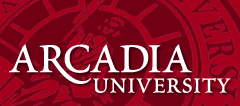Loading...
Date of Award
Spring 2025
Degree Name
Master of Medical Science (Physician Assistant)
Department
Physician Assistant; College of Health Sciences
First Advisor
Kimberly Erikson
Abstract
Breast cancer affects approximately 1 in 8 women, with about 10% of cases having a hereditary component. In the primary care setting, providers play a crucial role in identifying individuals at increased risk for hereditary breast cancer and connecting them to appropriate resources. Various screening tools, including the GAIL/BCRAT, BCSC, and IBIS/Tyrer-Cuzick models, help identify high-risk individuals and potential carriers of high-risk genetic mutations. Key mutations associated with increased breast cancer risk include BRCA1, BRCA2, ATM, CDH1, PALB2, PTEN, STK11, and TP53, all of which require specific screening protocols. Additionally, risk-reducing strategies such as surgery and chemoprevention will be reviewed. This current breast cancer screening protocols, indications for genetic counseling referrals, commonly implicated genes, and risk-reduction strategies for hereditary breast cancer will be reviewed.
Recommended Citation
Fox, Erin, "Hereditary Breast Cancer Screening in the Primary Care Setting" (2025). Capstone Showcase. 10.
https://scholarworks.arcadia.edu/showcase/2025/pa/10
Hereditary Breast Cancer Screening in the Primary Care Setting
Breast cancer affects approximately 1 in 8 women, with about 10% of cases having a hereditary component. In the primary care setting, providers play a crucial role in identifying individuals at increased risk for hereditary breast cancer and connecting them to appropriate resources. Various screening tools, including the GAIL/BCRAT, BCSC, and IBIS/Tyrer-Cuzick models, help identify high-risk individuals and potential carriers of high-risk genetic mutations. Key mutations associated with increased breast cancer risk include BRCA1, BRCA2, ATM, CDH1, PALB2, PTEN, STK11, and TP53, all of which require specific screening protocols. Additionally, risk-reducing strategies such as surgery and chemoprevention will be reviewed. This current breast cancer screening protocols, indications for genetic counseling referrals, commonly implicated genes, and risk-reduction strategies for hereditary breast cancer will be reviewed.
